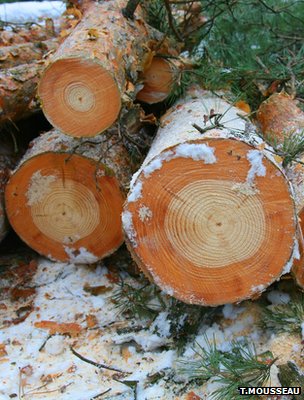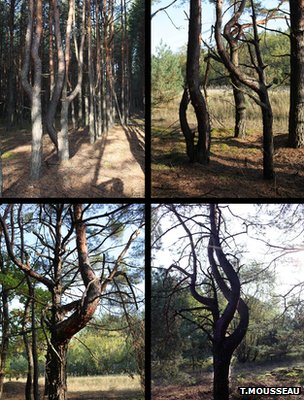- 10.08.2013
- 2631 Просмотр
- Обсудить
Exposure to radiation from the 1986 Chernobyl accident had a lasting negative legacy on the area's trees, a study has suggested.
Researchers said the worst effects were recorded in the "first few years" but surviving trees were left vulnerable to environmental stress, such as drought.
They added that young trees appeared to be particularly affected.
Writing in the journal Trees, the team said it was the first study to look at the impact at a landscape scale.
"Our field results were consistent with previous findings that were based on much smaller sample sizes," explained co-author Tim Mousseau from the University of South Carolina, US.
"They are also consistent with the many reports of genetic impacts to these trees," he told BBC News.
"Many of the trees show highly abnormal growth forms reflecting the effects of mutations and cell death resulting from radiation exposure."
Prof Mousseau, who has been carrying out field studies since 1999 within the 30km (19-mile) exclusion zone around the site of the 1986 explosion, said it was the first time that a study of this scale - involving more than 100 Scots pines (Pinus sylvestris) at 12 sites - had been conducted.
"There was one similar study conducted before but it only looked at a total of nine trees and was mainly interested in wood structure, not growth," he said.
"Another study was performed in the 1950s but it was for a different tree in the US and it used a single external gamma source suspended above the ground to show growth effects for a very limited number of trees."
For this study, the team took core samples from Scots pine trees for a number of reasons, such as the species is found across Europe and well dispersed within the Chernobyl region.
"They are also a favourite for silviculture and have enormous economic value," Prof Mousseau added.
"Also, based on past work and our own observations, they appeared to be a good target for radioecology as they showed signs of being impacted by the fallout.
"In fact, one of the first ecological observations at Chernobyl was the death of the so-called red forest: a stand of these pines which very quickly died and turned red following the disaster."
Scots pines' tree rings were also easier to read than other species, such as birch, found in the study area, he explained.


The twisted stems of Scots pines have been attributed to mutations caused by radiation exposure
Prof Mousseau and his team hope to follow up this study by carrying out similar work in the Fukushima region in Japan, where logging also had considerable economic importance and pine trees were widely dispersed.
"Based on our limited field observations in the most contaminated regions of Fukushima prefecture, there did not appear to be a major die off as seen in Chernobyl for Scots pines," he said.
"However, anecdotally, we have noticed significant die off of growing tips and branches in some areas that suggests that there could be impacts on growth.
"This is worth further investigation."
Будь-те первым, поделитесь мнением с остальными.
